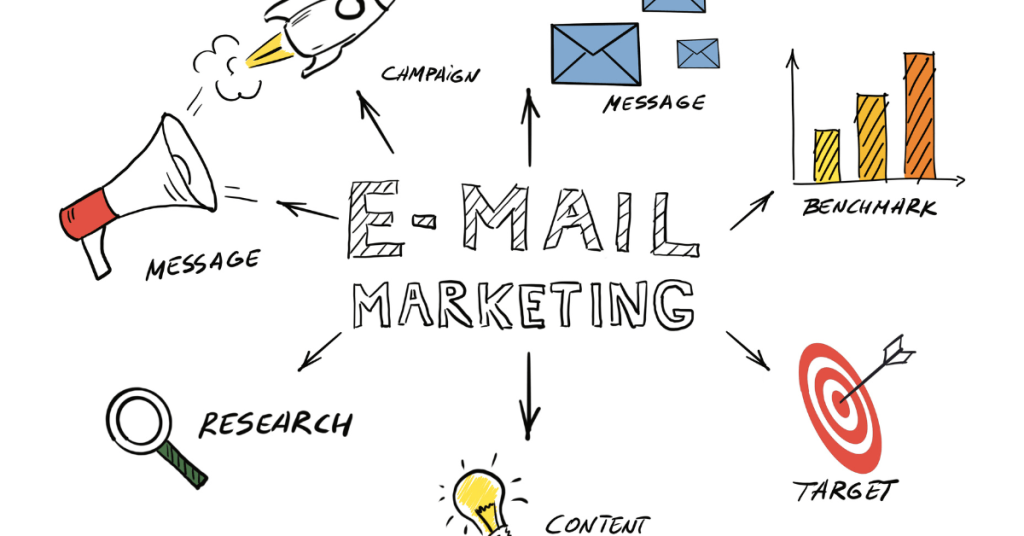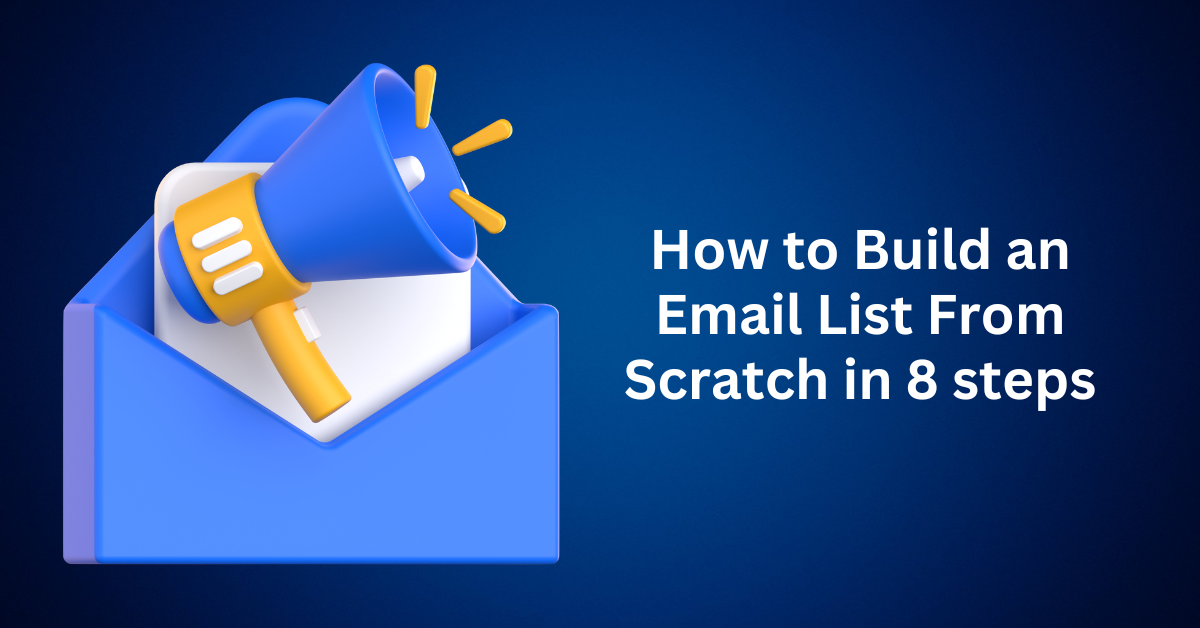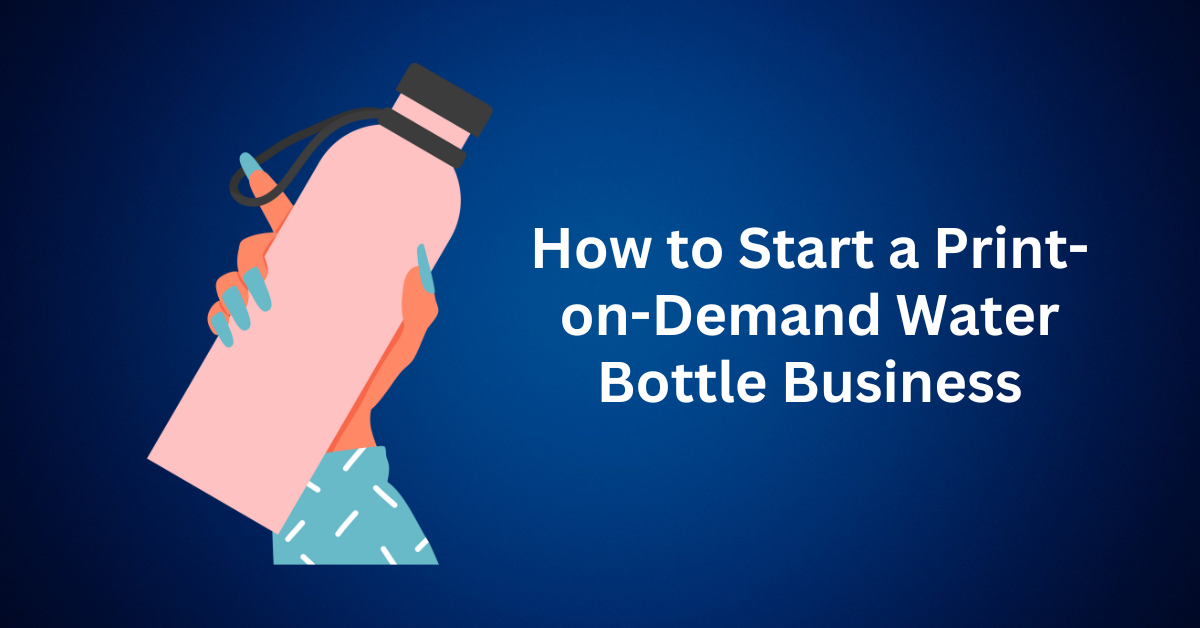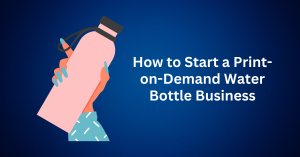Building an email list is like giving yourself a raise every month. There is a saying that every email that you add to your list should earn you $1 a month. Email list building is the foundation of effective email marketing.
You want to have a highly engaging list to grow your business. The quality of the list is more important than the size list. When you have too many bad emails on your list, all you will see are increasing bounce rates and bad returns on investment.
In this article, we’ll share how to build an email list from scratch. And specifically, how to build a highly engaging email list that will react to your email marketing campaigns and buy from you.
Try GetResponse with a 30-day free trial

Table of Contents
ToggleHow to build an email list from scratch (in 9 steps)
Every great marketer or email list starts from scratch. There is no shortcut to building an email list. It’s hard, but it’s very valuable when you are finally able to collect the highly engaging email list.
When you eventually nurture your list and build relationships with them, they will be your loyal customer. You will be able to get in touch with them and market new offers to them anytime.
Here’s what we will share on how to build an email list from scratch in 8 simple steps:
1. Make your newsletter a valuable product
If you want someone to subscribe to your list, make sure you are worth their effort and time. This is why you need to really plan well for your newsletter. Treat them like your main product that helps to communicate your value and offer to your audience.
There are a few rules to follow when it comes to newsletter design. The different niches might have different patterns. But it all comes down to the 3 following rules :
Focus on your target audience
When we create a business or a product, we need to first build our dream customer. For this, you should create an avatar of your dream customer. Someone that you want to serve. You will want to list as many details as possible.
By knowing who you want to serve and knowing whether they like it, you can steer your content and offers towards it. Constantly learn about their information needs and develop the right content that corresponds to their daily challenges.
Make it interesting
The content you share in your email marketing campaigns needs to be valuable for your target audience. However, it does not need to be packed with information and a long, boring email.
Instead, you should make it interesting to read. Get some bait in every email so that your subscribers will look forward to the next email. Just like a movie trailer. The email content shall be 70% entertaining and 30% informative.
By following these rules, you will be less hassled in writing the email, and your audience will be more likely to read more. Make sure it solves real-life problems and is easily accessible.
Engage with your contacts and ask for feedback.
A newsletter can be a two-way communication channel, e.g., send emails people can reply to, questionnaires, surveys, webinars, etc.
Remember, an email is not only used for sharing information. It’s also a tool to build relationships with your audience. The more they trust you, the more likely they are to buy from you.
People will tend to buy from people they know and trust.
Try GetResponse with a 30-day free trial
2. Promote your newsletter like a product
Once your newsletter is ready, you need to send traffic to it. For this, you can run ads or promote them on any social media. Just choose one platform and master it. Don’t try all platforms at once, as you will risk messing up everything. Advertise it and run promotional campaigns via the available channels (just like you would do with a product).
- Social media pages: Add the newsletter signup link or a banner to your social media page so that people can sign up for your list. You can share your lead magnet and, in return, ask for their contact details.
- Blog: Create a pop-up or opt-in form in your blog or website for your blog visitors to join your email list.
- Video: If you run a YouTube channel or TikTok channel, you can add your sign-up link in the bio or the description. And in your video, you can ask the viewer to click on the link and subscribe.
- Podcast: If you run a podcast, share your newsletter in your show. And provide them a subscription link. With the email list, you can remind them of your new live or new podcast release.
- Webinar: Webinars have no doubt been a game-changing thing these few years. Although live events are starting back, many of the marketers who already enjoy the benefit of it are doing hybrid events.
- E-commerce store: You can have an exit pop-up, a time-based pop-up, or a contact form where the customer will enter their contact details before going to the payment page. By doing this, even if they didn’t complete the purchase, you can still contact them. And, share with them future offers.
3. Create lead magnets
A lead magnet is something you offer in exchange for contact information. The goal of the lead magnet is to incentivise subscriptions and sometimes qualify leads. Instead of asking directly to subscribe to a newsletter, people need some “sweets” to motivate them to subscribe to one.
Anyway, we all have tonnes of marketing emails coming in, and hence, we are more sceptical about signing up for another newsletter. A lead magnet has been something important in generating new leads.
Some rules for a good lead magnet. It should be short, actionable, and easy to generate results. People want fast results now. Hence, I don’t recommend giving a hundred pages of ebooks. Not many will read it. Instead, a one-page cheat sheet will convert better as it’s packed with values.
Here are some examples of lead magnets.
- Cheatsheet
- Quick Guide
- Report
- Checklist
- Resource kit
- Framework
A lead magnet, in other words, is a freebie to bribe visitors to give you their contact information.
Try GetResponse with a 30-day free trial
4. Show the benefits of your email list
With so many newsletters and email lists competing for attention, it’s crucial to clearly communicate why yours stands out—and why someone should choose to subscribe. Start by answering the core question: What makes your list different? Whether it’s exclusive content, insider deals, practical tips, or early access to new products, your audience needs a compelling reason to join.
Think about the specific value you can provide. What will your subscribers gain that they can’t get elsewhere? Will they receive actionable advice, inspiring stories, behind-the-scenes insights, or VIP discounts? Be clear about what they can expect from your emails, and deliver on that promise consistently. This builds trust and sets the tone for an engaging, long-term relationship.
To take it a step further, always explain why your email content matters to them. Don’t just list features. Instead, highlight the benefits. For instance, instead of saying “Get my free guide,” say “Get my free guide to save 5 hours a week on marketing tasks.”
In many cases, you can boost conversions by offering something irresistible right on your pop-up or landing page. Create a brainless offer—one so valuable and relevant that signing up feels like a no-brainer. Whether it’s a discount, a free template, or a limited-time bonus, this kind of offer gives your audience an immediate reason to opt in.
In short, stand out by being crystal clear about your unique value, set expectations upfront, and make the decision to join your list feel like a smart, easy choice.

5. Create a landing page for your newsletter
Now you have all the preparation work done. It’s time to go to the fun part. It’s the landing page building time. A landing page, also known as a “lead page” or a “squeeze page”, is a single webpage designed to generate and collect leads. That’s all.
Many people tend to add too many things to this page without realising that they should focus on only one goal on one page.
If you need to have multiple actions or offers, then build a sales funnel and guide your potential customers through the sales process one by one. The power of a sales funnel is to let potential customers make simple yes or no decisions.
There are many ways to build landing pages; however, the easiest method is to use a landing page creator. Specifically, a drag-and-drop tool is designed to help you build a professional-looking, high-converting landing page with ease.
For example, GetResponse is an all-in-one digital marketing platform that offers mobile-optimized, free landing page templates. Moreover, it includes an intuitive drag-and-drop editor, email marketing capabilities, and a wide range of additional features.
ClickFunnels, on the other hand, is a complete sales funnel creator that is optimized to create the entire sales process.
6. Add subscription forms to your website and blog
An opt-in form, also known as a signup form, is a simple tool placed on a website to allow visitors to subscribe and receive further communication or offers. It serves as a gateway for collecting contact information and is essential for growing an email list or engaging leads.
There are several types of opt-in forms you can implement, each suited to different user behaviors and website goals. These include contact forms, subscription forms, exit pop-ups, time-based pop-ups, scroll bars, and top notification bars. Choosing the right format depends on your strategy and where you want to engage your audience.
For example, adding a fixed bar or a pop-up form to high-converting pages—such as your product page or about us page—can significantly increase sign-ups. These are the areas where visitors are already showing interest, making it the ideal time to invite them to subscribe for more relevant information.
To build an opt-in form, you can use tools like the built-in pop-up/opt-in form builder in GetResponse. Similarly, ClickFunnels provides a pop-up feature within every page builder, allowing you to create custom forms on any landing page. These platforms often come with a variety of templates and user-friendly editors, so you can easily match the design to your website’s branding.
When designing your form, simplicity is key. Make it easy and quick for someone to sign up. Avoid lengthy fields or requiring too much information. Ideally, limit the form to just a name, email address, an optional phone number, and a checkbox for social media or consent.
Try GetResponse with a 30-day free trial
7. Run a webinar
A webinar had been a great way to build an email list with high-quality contacts.
Why?
A webinar is also known as an online conference or online seminar. For people to attend the webinar and follow through with your webinar, there is a huge commitment made. In the webinar, they already know you and recognize you as an “expert” they can trust. That’s why they can start at half or the end of the webinar. This group of audience is high-quality contacts.
Carefully planned webinar content will certainly attract your target audience. You can promote your webinar via other online marketing channels to maximize outreach.
8. Create a lead generation funnel
The lead funnel has been a very effective way for lead generation. With lead magnet funnels, you can host your lead magnets, set up landing pages, create autoresponders, and promote them with Facebook Ads, all in a matter of minutes.
The lead funnel is also easy to build, where you don’t need too much of elements inside. Just share with them the lead magnet, what it is, how to claim it, and then the contact form to key in their information.
Final Thoughts on How to Build an Email List From Scratch
Email marketing campaigns have been proven to work well for online businesses, and to achieve success in it, building a huge email list plays the most important role.
Now you are equipped with the skill, start building your list today and get a pay raise daily.



